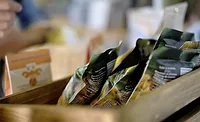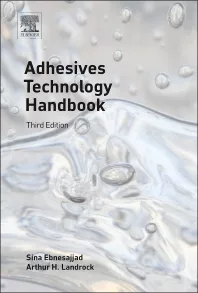From the Editor
The Latest in Sustainable Adhesive and Sealant Technology
The team of researchers at Purdue recently had a paper published in Nature that discusses sustainable adhesive systems developed using biomimicry.

This month’s issue of ASI is our annual sustainability issue. Since last November, there has been a lot of talk within the chemical industry about new initiatives companies are implementing to reach sustainability goals and provide products that are more environment-friendly. Additionally, innovation in government, academic institutions and industrial spaces also continues to grow. As it does, ASI tries to keep readers up to date on the latest sustainable technologies.
One recent announcement coming out of Purdue is creating some buzz within the adhesives and sealants industry. Jonathan Wilker, professor of chemistry in the College of Science and of materials engineering at Purdue, is leading a team of scientists that are developing sustainable adhesive systems by analyzing how marine animals, such as mussels and oysters, adhere. The team’s findings were recently published in a paper in Nature.
“Our current adhesives create all sorts of environmental problems,” Wilker said in a news release about this research. “Almost all glues are petroleum-based and do not degrade. The bonded materials in our products stay stuck together. Consequently, we cannot recycle many of the materials that we put into our recycling bins. Discarded products will sit in landfills for centuries and, sometimes, contribute to ocean microplastics.”
Wilker is using epoxidized soy oil as one of main ingredients in his formulations. One simple and inexpensive step turns raw soybean oil into epoxidized soybean oil, which makes it an affordable, accessible and effective ingredient. Wilker and his team added the epoxidized soy oil to malic acid and then added tannic acid, to provide an aspect of the chemistry that mussels use for attaching themselves to rocks and each other. With those three ingredients, the team was able to create an adhesive that is inexpensive, effective, scalable, practical to produce and completely sustainable.
“If you combine these components under the right conditions, adhesives can be made that are as strong as epoxies,” Wilker said. “All of the components are bio-based, safe and already available at train car scales. A bonus is that the adhesive is easy to make. Basically, you can mix and heat the components.” Other bio-based compounds can also be used with epoxidized soy oil, generating an entire family of new sustainable adhesives.
To test the adhesive’s performance, the scientists reported that in many cases, their new adhesives held up well, sometimes performing similarly to, or even better than, traditional solutions such as a superglue and an epoxy. The team reports that further research will refine the system and work to maximize societal and environmental impacts in areas ranging from medical innovations to industrial materials to packaging. Their team’s innovations may pave the way to a more sustainable system for holding the world together.
Biomimicry is just one of the ways that researchers in the industry are creating new, more sustainable materials. In this issue of ASI, we feature an article by Münzing about the use of additives and other materials with renewable content to enhance the sustainability of your formulations, an article by Plasmatreat about atmospheric pressure plasma as an efficient, reliable and cost-effective alternative to treating substrates, and an article about the use of a lignin-based binder in plywood manufacturing. I hope you enjoy reading these and other articles, and please email your comments to parkerk@bnpmedia.com.
Looking for a reprint of this article?
From high-res PDFs to custom plaques, order your copy today!






